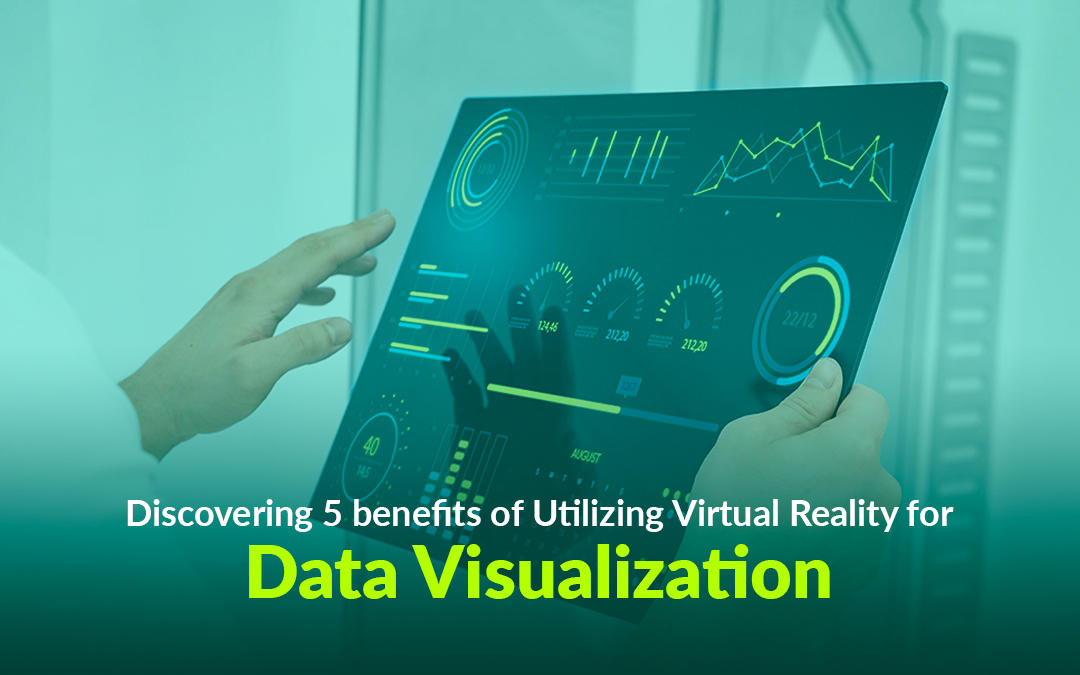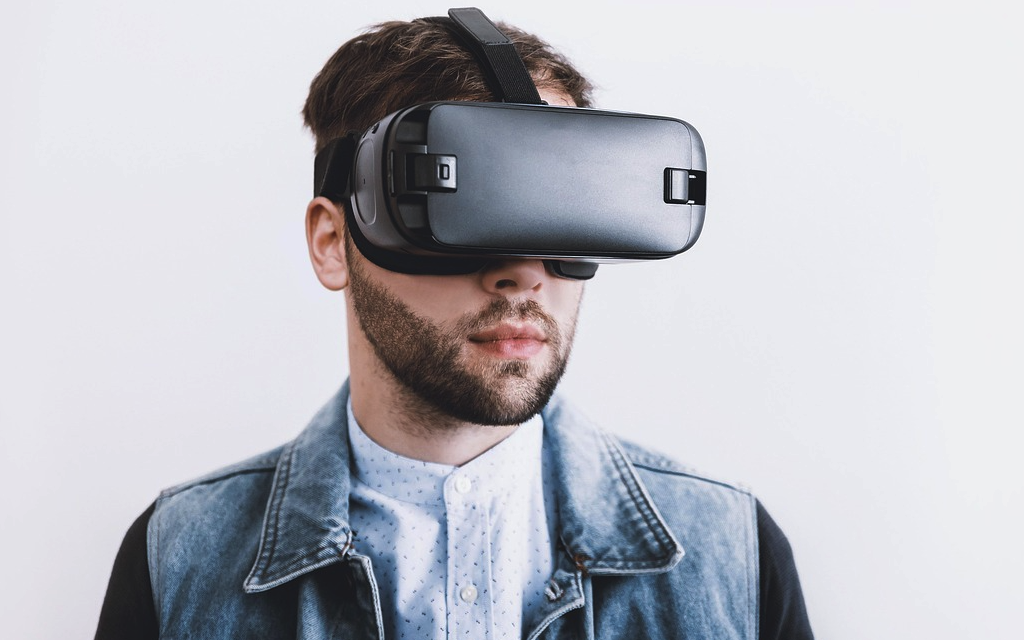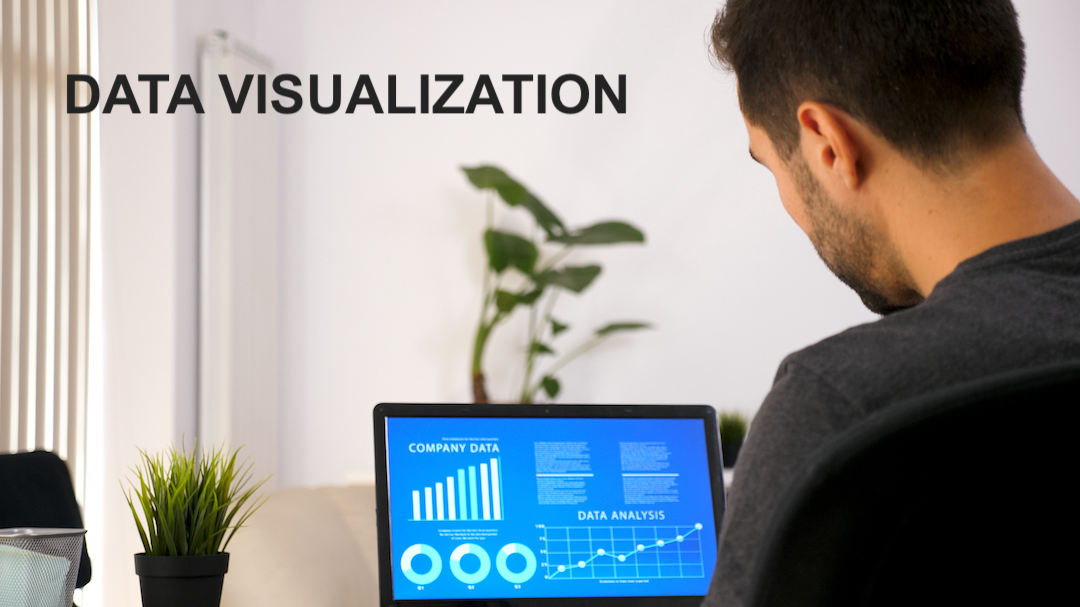
In this brave new digital world, organizations worldwide have come to understand that effective decision-making hinges on one critical factor: data. Companies that can accurately and efficiently interpret complex data gain a significant upper hand. It's the difference between flying blind and having a clear, well-defined roadmap to success. In today's high-stakes world of data visualization, the only constant is change - and as groups combat the opacity of complex data sets, VR has emerged as the ace up their collective sleeve.
Brief Explanation of Virtual Reality (VR) and Its Evolution
Virtual Reality (VR) is a computer-generated simulation of an environment that can be interacted with in a seemingly real or physical way by a person using special electronic equipment, such as a helmet with a screen inside or gloves fitted with sensors. Initially conceptualized as a niche product for gaming and entertainment, VR technology has undergone significant transformations. From humble beginnings, its influence has branched out to revamp vital sectors - cancer research, e-learning platforms, combat training, and now, data visualization software, all benefiting from its revolutionary spin. What was once purely the stuff of science fiction is now a hard-hitting business reality, with virtual reality owes its meteoric rise to phenomenal advances in computing and VR capability.

Overview of the Importance of Data Visualization in Today’s Data-Driven World
Data visualization is the graphical representation of information and data. When you lay out complex data in a visual format, like charts, graphs, and maps, it's amazing how quickly you can spot the relationships, exceptions, and the overall story it tells. Nowadays, Data analysis has a ticking clock attached to it - decisions need to be made at lightning speed. A well-designed data presentation doesn't just elevate the findings - it broadens the audience that can benefit from them.
Transition to How VR is Revolutionizing Data Visualization
Virtual Reality has started to revolutionize the data visualization landscape by offering immersive experiences that traditional 2D screens cannot match. Freed from the constraints of screens and mice, VR users can immerse themselves in data, experience it firsthand, and uncover new perspectives. For years, we've gazed at data through a window, witnessing but not participating. Now, we're finally invited to join the dance, stepping into the rich tapestry of interconnected insights, where complexities unfurl and hidden truths reveal themselves.
The Power of Immersive Data Analysis
Virtual Reality creates immersive, three-dimensional spaces where users can interact with data in real time. Data introspection reaches new heights in this environment, where every pixel holds a secret waiting to be uncovered by rotating the digital sphere. The immersive nature of VR for data visualization enables users to walk through, dissect, and even manipulate data spatially as if it were a tangible object in the real world.
Imagine being immersed in a sea of data - suddenly, patterns emerge, and a deeper intuition about the data set begins to take hold. This all-encompassing dive lets users spot those hard-to-see patterns, outliers, and correlations that wouldn't stand out in a traditional 2D view. Data analysis ceases to be a sedentary affair with VR technology, which whisks you away on an interactive journey where tactile sensations evoke lasting memories.
Enhanced Comprehension and Retention
Imagine data that not only looks amazing but also sticks in your mind like never before - that's what VR technology can do, going beyond aesthetics to actually improve our understanding and recall. Imagine stepping inside a virtual data visualization, where numbers and graphs transform into living, breathing ecosystems - that's the kind of mind-bending insight VR offers.
The results are in: learning in virtual reality is more effective at keeping information stuck in your head.
What we've learned from numerous investigations is that when we learn through VR, we absorb more and remember it better. The stats are in, and they're quite telling: when we analyze data in a virtual environment, our recall accuracy gets a serious upgrade compared to more traditional approaches. When you absorb knowledge through multiple senses, it's like depositing it straight into your long-term memory account - the returns are substantial and long-lasting.
Interactive and Engaging Presentations
In the context of data visualization, the interactive nature of VR transforms static charts and graphs into dynamic, engaging experiences.
Exploring the Interactive Nature of VR for Data Exploration
Users can physically move through vast datasets, select variables to change, and observe the effects of those changes in real-time. By putting data exploration directly in their hands, users can actively shape their own conclusions, free from static analyses.
Case Studies or Examples of VR Presentations Leading to Higher Engagement
Case studies from industries ranging from finance to healthcare illustrate how VR presentations have led to significantly higher engagement levels among stakeholders. For instance, VR has been leveraged in boardrooms to project global market trends in an interactive 3D format, enabling executives to navigate through layers of financial data with simple gestures, making strategic discussions more engaging and productive.
Revealing Hidden Patterns and Insights
One of the most transformative aspects of employing VR in data visualization is its ability to reveal hidden patterns and insights that traditional 2D visualizations might miss.
How VR Allows Users to Navigate and Manipulate Large Datasets in 3D Space
Using VR, users can manipulate data in a three-dimensional space, examining it from all angles and scales. Imagine data as a multifaceted gem: spatial maneuverability lets analysts turn it, twist it, and examine it from every side, revealing facets that would be invisible in a two-dimensional format. Interacting with individual data points, almost like observing pieces of a puzzle, allows you to zone in on the intricacies that make all the difference.
The Advantage of Spotting Trends and Patterns That Might Be Missed in 2D Visualizations
The three-dimensional immersion into data sets can illuminate trends that would be difficult or impossible to detect on a flat screen. In the virtual realm, hidden facets of data spring into vivid relief, and analysts can, at last, see the fine print they'd otherwise have overlooked, which drastically shifts the odds of making wise, data-driven decisions.
Simplified Collaboration in Data Analysis
Virtual Reality also facilitates a new dimension of collaborative possibilities in the analysis of data.
Data discovery gets a whole lot easier with VR, as dispersed teams converge on a single platform, driving a free flow of ideas and sparking game-changing connections between the dots.
Wherever they are in the world, team members can step into a shared virtual workspace, simultaneously poring over the same datasets, and reacting to the same insights. Distances disappear in this virtual collaborative space, where team members can seamlessly work together, no matter where they are.
Examples of Multi-user VR Environments Where Teams Can Work Together Seamlessly
Multi-user VR environments have been successfully utilized in global companies where team members join a shared virtual space to discuss data-driven strategies. Step into a virtual room and the boundaries of collaboration disappear. You can mold data, project outcomes, and explore scenarios just like you would in a face-to-face meeting – only faster.
Streamlining Complex Decision-Making Processes
By ditching traditional analysts' parlance for a more visceral experience, VR breaks the logjam in decision-making. Interactive environments intuitive enough for anyone to grasp, and immersion sharp enough to bring insight into laser focus.
Discussing the Impact of VR Visualization in Making Informed Decisions Quickly
In a VR data visualization environment, decision-makers can quickly pivot data, explore hypothetical scenarios, and gauge potential outcomes instantaneously. Armed with these capabilities, the thorniest problems will unravel before your eyes, giving you the clarity and confidence to act swiftly and decisively.
Real-life Scenarios Where VR Data Visualization Led to Effective Decision-Making
An example includes a logistics company using VR to optimize its supply chain. When company executives ventured into VR, they found themselves hovering above a virtual landscape of global shipping lanes and warehouse shelves. With this turbocharged perspective, they quickly zeroed in on stubborn inefficiencies, devised a fix, and proudly watched their cost savings soar and service ratings climb.
Virtual reality and video conferencing - two revolutionary tools, one game-changing collaboration experience. Forget clunky screens and generic avatars; step into a new era of productive communication.
Imagine attending a virtual meeting that's almost indistinguishable from being there in person - that's the promise of combining VR with video conferencing tools like freeconference.com.
The Future of Remote Work
The future of remote work is here: VR-infused video conferencing that makes collaboration feel almost face-to-face. Virtual meetings just got a whole lot more dynamic. With this convergence, we can now tap into the collective brainpower of our teams, making light work of even the most intricate data analysis.
How Blending These Technologies Can Provide a Near-Physical Presence in Virtual Meetings
With VR, participants in different locations can feel as though they are in the same room, discussing data visualizations that they can both see and interact with in real-time. In virtual meetings where everyone feels truly present, communication goes from frustrating to flowing, and that, in turn, amplifies productivity.
Conclusion
The forecast is in, and these are the trends that will matter most. Imagine a world where complex data is visceral, immersive, and engaging - that's the promise of VR in data visualization, but what comes next?
VR is about to do for data visualization what the microscope did for biology – take us to a whole new level of understanding and discovery. In the pipeline, we've got data game-changers like intuitive interfaces that really flow, robust team integrations, and the same cutting-edge AI that cracks the code on tedious analysis tasks.
Imagine being able to reach out and touch complex data sets in a virtual environment - that's the future we're heading towards with the latest developments in VR haptic feedback and intuitive interfaces.
The benefits of Virtual Reality in data visualization are undeniable: better grasping of complex concepts, accelerated decision-making, and more cohesive team dynamics - a trifecta of advantages. Businesses should stop settling for "good enough" when dealing with hard-to-grasp data insights; instead, hook them up with a VR-enabled environment and watch as intel comes to life in unprecedented ways. Exploring VR technologies today could very well be the key to unlocking a more data-driven and successful tomorrow.
Related Posts
Share this post
Leave a comment
All comments are moderated. Spammy and bot submitted comments are deleted. Please submit the comments that are helpful to others, and we'll approve your comments. A comment that includes outbound link will only be approved if the content is relevant to the topic, and has some value to our readers.



Comments (0)
No comment